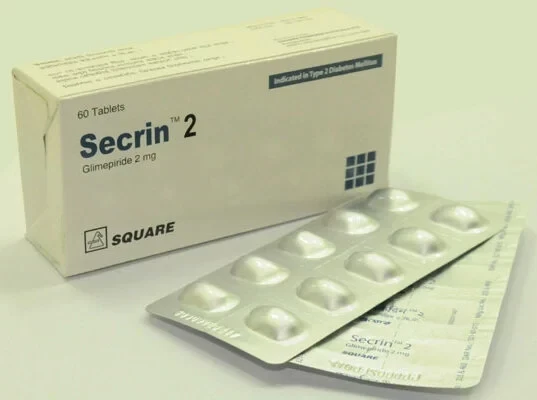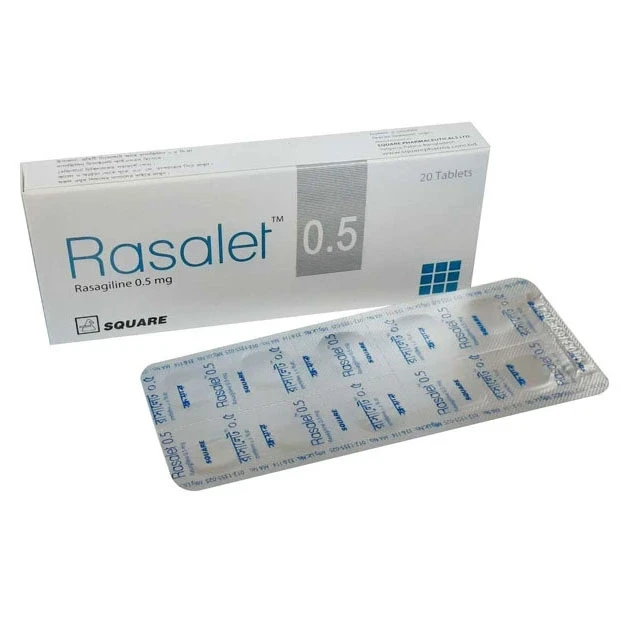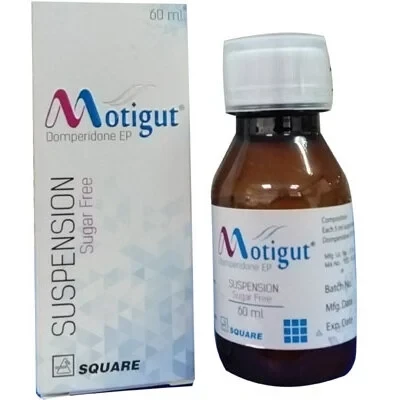

Secrin Tablet, Glimepiride 2 mg
Inhouse product
-
৳11.40
৳12.00 -
৳42.75
৳45.00 -
৳16.63
৳17.50 -
৳2.14
৳2.25
Reviews & Ratings
Indications
Secrin tablet is
indicated in following conditions-
- Secrin is indicated as an adjunct to diet and exercise
to lower the blood glucose in patients with noninsulin dependent (Type II)
diabetes mellitus (NIDDM) whose hyperglycaemia cannot be controlled by
diet and exercise alone.
- Secrin may be used concomitantly with metformin when
diet, exercise, and Secrin or metformin alone does not result in adequate
glycaemic control.
- Secrin is also indicated for use in combination with
insulin to lower blood glucose in patients whose hyperglycaemia cannot be
controlled by diet and exercise in conjunction with an oral hypoglycaemic
agent.
- Combined use of Secrin and insulin may increase the
potential for hypoglycaemia.
* রেজিস্টার্ড চিকিৎসকের পরামর্শ মোতাবেক ঔষধ সেবন করুন'
Pharmacology
Glimepiride is a sulfonylurea antidiabetic
agent which decreases blood glucose concentration. The primary mechanism of
action of Glimepiride appears to be dependent on stimulating the release of
insulin from functioning pancreatic beta cells. Glimepiride acts in concert
with glucose by improving the sensitivity of beta cells to physiological
glucose stimulus, resulting in insulin secretion. In addition, extrapancreatic
effects like reduction of basal hepatic glucose production, increased
peripheral tissue sensitivity to insulin and glucose uptake may also play role
in the activity of Glimepiride. In non-fasting diabetic patients, the
hypoglycaemic action of a single dose of Glimepiride persists for 24 hours.
Dosage
In principle, the dosage of Glimepiride is governed
by the desired blood sugar level. The dosage of Glimepiride must be the lowest
which is sufficient to achieve the desired metabolic control. The initial and
the maintenance doses are set based on the results of regular check of glucose
in blood and urine. Monitoring of glucose levels in blood and urine also serves
to detect either primary or secondary failure of therapy.
Initial dose and dose
titration: the usual initial
dose is 1 mg once daily, if necessary, the daily dose can be increased. Any increase
can be based on regular blood sugar monitoring, and should be gradual, i.e., at
intervals of 1 to 2 weeks, and carried out stepwise, as follows: 1 mg -> 2
mg -> 3 mg -> 4 mg -> 6 mg.
Dose in patients with
well controlled diabetes:
the usual dose range in patients with well controlled diabetes is 1 to 4 mg
daily.
Distribution of doses: Timing and distribution of doses are decided
by the physician, in consideration of the patient's current life-style.
Normally, a single daily dose is sufficient. This should be taken immediately
before a substantial breakfast or if none is taken immediately before the first
main meal. It is very important not to skip meals after taking the drug.
Secondary dosage
adjustment: As control of
diabetes improves, sensitivity to insuiin increases; therefore, Glimepiride
requirement may fall as treatment proceeds. To avoid hypoglycaemia, timely dose
reduction or cessation of Glimepiride therapy must be considered. A dose
adjustment must also be considered whenever the patient's weight or life-styie
changes, or other factors arise which cause an increased susceptibility to hypo
or hyperglycaemia.
Changeover from other
oral antidiabetics to Glimepiride: There is no exact dosage relationship between Glimepiride and
other oral blood sugar lowering agents. When substituting Glimepiride for other
such agents, the initial daily dose is 1 mg; this applies even in changeover
from maximum dose of other oral blood sugar lowering agents. Any dose increase
should be in accordance with guideline given above in 'initial dose and dose
titration'. Consideration must be given to the potency and duration of action
of the previous blood sugar lowering agent. It may be necessary to interrupt
treatment to avoid additive effects which would increase the risk of
hypoglycaemia.
* রেজিস্টার্ড চিকিৎসকের পরামর্শ মোতাবেক ঔষধ সেবন করুন'
Administration
Glimepiride tablet must be swallowed with
sufficient amount of liquid.
* রেজিস্টার্ড চিকিৎসকের পরামর্শ মোতাবেক ঔষধ সেবন করুন'
Interaction
Based on experience
with Secrin and known interactions for other sulfonylureas, the following
interactions must be considered.
In addition to insulin
and other oral antidiabetic agents, drugs which may potentiate the
hypoglycaemic action of Secrin include: ACE inhibitors, aminosalicylic acid, anabolic steroids and
male sex hormones, azapropazone, chloramphenicol, ciofibrate, coumarin
derivatives, cyclophosphamide, disopyramide, fenfluramine, fenyramidol,
fibrates, fluconazole, fluoxetine, guanethidine, ifosfamide, MAO-inhibitors,
miconazole, oxpentifylline (high dose parenteral), oxyphenbutazone,
para-aminosalicylic acid, phenylbutazone, probenecid, quinolones, salicylates,
sulphinpyrazone, sulfonamide antibiotics, tetracyclines, tritoqualine,
trofosfamide.
Drugs which may attenuate the hypoglycaemic action of Secrin include:
- Acetazoiamide, barbiturates, calcium channel blockers,
corticosteroids, diazoxide, diuretics, glucagon, isoniazid, laxatives,
nicotinic acid (high doses), oestrogens, phenothiazines, phenytoin,
progestagens, rifampicin, sympathomimetic agents, thyroid hormones.
- H2 receptor antagonists, beta-blockers, clonidine and
reserpine may lead to either potentiation or weakening of the
blood-glucose-lowering effect.
- Concomitant treatment with a beta-receptor blocker,
clonidine, guanethidine or reserpine may mask the warning symptoms of a
hypoglycaemic attack.
- Acute and chronic aicohol intake may either potentiate
or attenuate the activity of Secrin in an unpredictable fashion.
Contraindications
Glimepiride is not suitable for the treatment
of insulin dependent (type I) diabetes mellitus, or for the treatment of
diabetic ketoacidosis, nor for the treatment of diabetic coma. Glimepiride must
not be used in patients hypersensitive to Glimepiride, other sulfonylureas,
other sulfonamides, severe hepatic dysfunction, severe impairment of renal
function and dialysis patients.
Side Effects
Hypoglycaemia, temporary visual impairment,
nausea, vomiting, diarrhoea, abdominal pain, urticaria, fall in blood pressure.
Pregnancy &
Lactation
Glimepiride must not be taken during
pregnancy; a changeover to insulin is necessary. Patients planning a pregnancy
must inform their physician, and should change over to insulin. Ingestion
of Glimepiride with breast milk feeding may harm the child. Therefore,
Glimepiride must not be taken by breastfeeding women. Either a changeover or
complete discontinuation of breastfeeding is necessary.
Precautions &
Warnings
in the initial weeks of treatment, the risk of
hypoglycaemia may be increased and necessitates careful monitoring. If such
risk present it may be necessary to adjust the dosage of Secrin, Hypoglycaemia
can almost be promptly controlled by immediate intake of carbohydrates (glucose
or sugar).
Overdose Effects
Overdosage of sulfonylureas, including Secrin,
can produce hypoglycaemia. Mild hypoglycaemic symptoms without loss of
consciousness or neurologic findings should be treated aggressively with oral
glucose and adjustments in drug dosage or meal patterns. Close monitoring
should continue until the physician is assured that the patient is out of
danger. Severe hypoglycaemic reactions with coma, seizure, or other
neurological impairment occur infrequently, but constitute medicai emergencies
requiring immediate hospitalization. If hypoglycaemic coma is diagnosed or
suspected, the patient should be given a rapid intravenous injection of
concentrated (50%) glucose solution. This should be followed by a continuous
infusion of a more dilute (10%) glucose solution at a rate that will maintain
the blood glucose at a level above 100 mg/dl. Patients should be closely
monitored for a minimum of 24 to 48 hours, because hypoglycaemia may recur
after apparent clinical recovery.
Therapeutic Class
Sulfonylureas
Storage Conditions
Do not store above 30°C. Keep away from light
and out of the reach of children.
Frequently Bought Products
Lecor Syrup 200ml, Patrangasav
Rasalet Tablet, Rasagiline 0.5 mg
Tiapine Tablet, Quetiapine Fumarate 25 mg
Monera Syrup, Bacopa extract [Natural memory enhancer]
Prebalin CR Tablet (Extended Release), Pregabalin 165 mg
ResQ Capsule, Coenzyme Q10 [Ubidecarenone] 200 mg
Carbizol Tablet, Carbimazole 10 mg
Product Queries (0)
Login Or Registerto submit your questions to seller
Other Questions
No none asked to seller yet
-
৳11.40
৳12.00 -
৳42.75
৳45.00 -
৳16.63
৳17.50 -
৳2.14
৳2.25











![Monera Syrup, Bacopa extract [Natural memory enhancer]](https://skpharma.com.bd/public/uploads/all/TVn8lkmtWBtLQIrcHxvI8zzp2Tb210jNGVSEtHzw.png)


![ResQ Capsule, Coenzyme Q10 [Ubidecarenone] 200 mg](https://skpharma.com.bd/public/uploads/all/YhaO473tf9LSEI4ZVxaAvWx9rBu5rQtat3GOFQqc.jpg)


